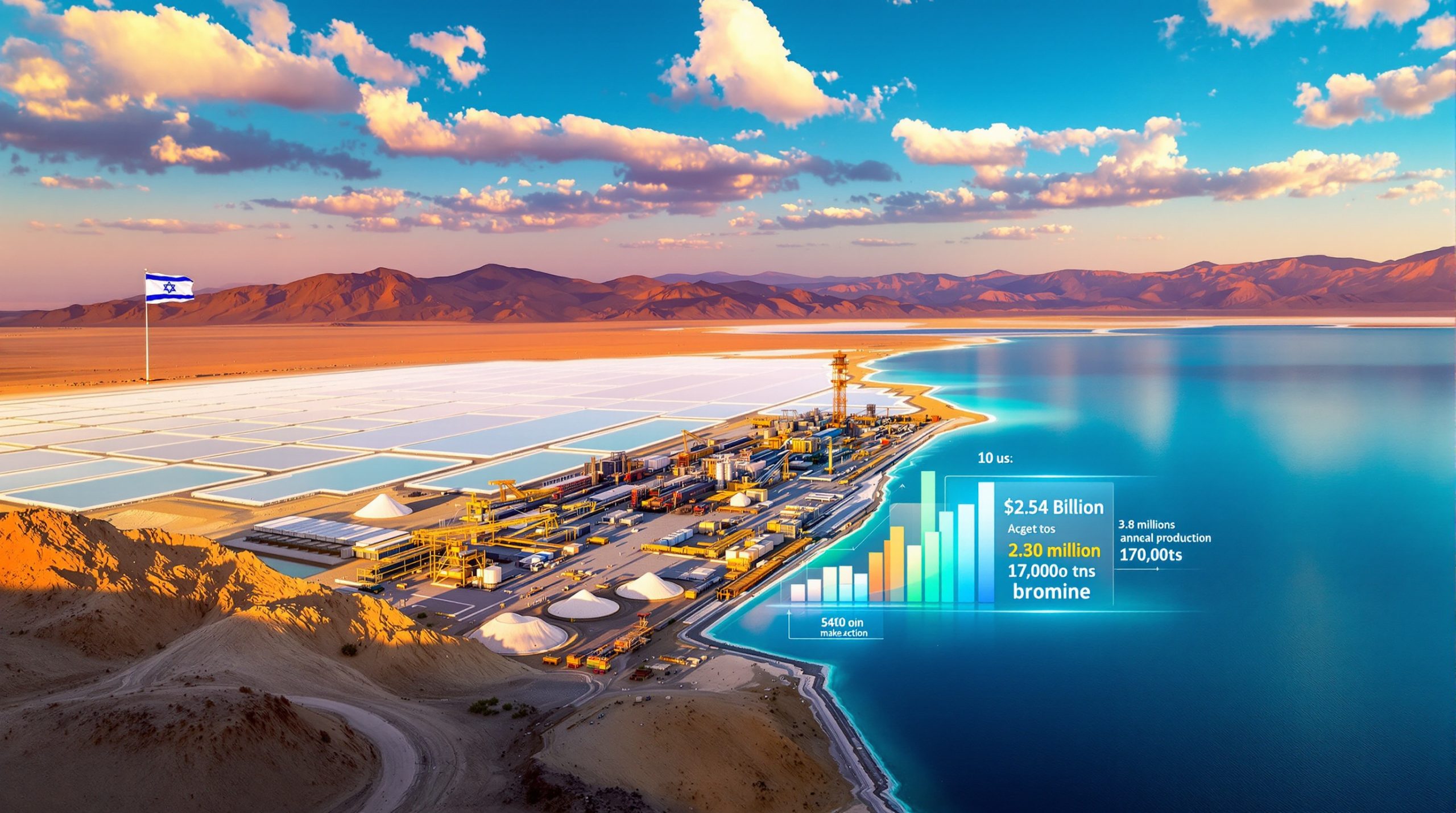How Is Coal Funding Changing in the Energy Transition Era?
The global energy landscape is undergoing a profound transformation as nations navigate the complex path toward decarbonization while maintaining energy security. Coal, historically the backbone of many economies' power generation, now faces unprecedented scrutiny in investment circles. This changing dynamic has created a complex funding environment where traditional financing mechanisms are being reevaluated against emerging climate priorities.
Despite global decarbonization efforts, coal remains a significant energy source worldwide, accounting for approximately 33% of global electricity generation as of 2025. This persistent demand has maintained investment flows, with commercial banks across Asia, Europe, and North America investing over $130 billion in coal-related projects in 2024 alone.
However, these investments exist within an increasingly polarized financing landscape where metallurgical coal (used for steel production) often receives preferential treatment compared to thermal coal (used for electricity generation), despite both being essential to different sectors of the global economy.
The Current State of Coal Financing
The funding landscape for coal reflects a complex reality shaped by competing priorities. While climate-focused investors increasingly restrict thermal coal financing, industrial applications continue attracting capital due to their critical role in manufacturing processes and limited viable alternatives.
This dichotomy has created an uneven investment environment where coal projects face varying levels of scrutiny depending on their end-use applications, geographic location, and technological integration—rather than being evaluated on their overall economic and environmental merits.
Why Is Coal Still Receiving Investment Despite Climate Concerns?
Strategic Importance in Global Energy Security
Coal continues to attract investment due to its critical role in energy security frameworks across numerous economies. For developing nations particularly, coal-fired power plants provide reliable baseload power that supports industrial development and economic growth in regions where alternatives remain limited or economically challenging.
The resource's abundance, established supply chains, and relatively low cost compared to some alternatives make it an attractive option for nations prioritizing affordable energy access alongside climate considerations.
Many emerging economies view coal as essential infrastructure for development pathways, arguing that established economies relied on similar resources during their industrialization phases. This perspective has maintained investment flows despite increasing pressure from international climate frameworks.
Industrial Applications Beyond Power Generation
While much attention focuses on coal's role in electricity generation, significant investment continues flowing toward metallurgical coal used in steel manufacturing and other industrial processes. These applications, which currently have limited commercially viable alternatives at scale, include:
- Steel production (requiring coking coal)
- Cement manufacturing
- Chemical production
- Fertilizer manufacturing
- Carbon fiber and advanced materials
- Silicon metal production for electronics
These industrial applications represent a substantial portion of global coal demand and continue attracting investment even as power generation transitions toward renewable energy solutions. The steel industry alone accounts for approximately 70% of metallurgical coal consumption globally, making it a significant driver of continued investment.
What New Funding Models Are Emerging for Coal?
Responsible Coal Investment Frameworks
A new approach gaining traction is the development of investment frameworks that support responsible coal operations rather than categorical exclusion. The Sustainable Coal Stewardship (SCS) framework, promoted by industry alliance FutureCoal, represents one such approach that encourages investment in:
- Advanced mining technologies that minimize environmental impacts
- Modern combustion technologies that reduce emissions
- Carbon capture utilization and storage (CCUS) integration
- Beyond-combustion applications that convert coal into high-value products
These frameworks aim to establish standards for responsible coal investment that balance economic, social, and environmental considerations rather than implementing blanket exclusions.
The SCS framework specifically addresses lifecycle emissions reduction potentials, social impact considerations, and technological integration pathways—providing investors with more nuanced evaluation criteria beyond simple coal/no-coal binary choices.
Transition-Focused Investment Mechanisms
Innovative financing mechanisms specifically designed to support the coal transition are emerging globally:
| Mechanism | Purpose | Approximate Funding |
|---|---|---|
| Climate Investment Funds' ACT Program | Supporting coal plant retirement and clean energy development | $2.2-2.6 billion |
| Just Energy Transition Partnerships (JETPs) | Country-specific funding packages for coal-dependent economies | Varies by country |
| Energy Transition Mechanism (ETM) | Accelerating retirement of coal assets in Asia | Developing |
| Transition Coal Credits | Carbon finance for early coal plant closure | Market-based |
These mechanisms recognize that managing coal's role in the energy transition requires dedicated financial tools rather than simple divestment strategies.
The Asian Development Bank's Energy Transition Mechanism, for example, creates a structured approach to financing early retirement of coal-fired power plants while supporting replacement with renewable alternatives—acknowledging the need for managed transition rather than abrupt shifts.
How Are Financial Institutions Approaching Coal Investment?
Diverging Approaches Among Global Banks
Financial institutions have adopted widely varying approaches to coal financing, creating a fragmented investment landscape:
- Full Exclusion Policies: Some European and North American banks have implemented complete bans on new coal project financing
- Conditional Financing: Others maintain coal in their portfolios under increasingly stringent environmental and social criteria
- Regional Variations: Asian financial institutions generally maintain more substantial coal exposure than their Western counterparts
- Differentiated Approaches: Many institutions apply different standards to metallurgical versus thermal coal investments
This divergence creates challenges for coal-dependent economies seeking consistent access to capital markets, particularly for projects incorporating advanced technologies that could reduce emissions.
The inconsistency in approaches also creates potential for regulatory arbitrage, where projects unable to secure financing from institutions with strict exclusion policies may seek capital from less restrictive sources—potentially resulting in projects proceeding with fewer environmental safeguards than might otherwise be possible.
Risk Assessment Evolution
Financial institutions are developing more sophisticated approaches to evaluating coal investments that go beyond simple exclusion policies:
- Integration of climate transition risks into lending decisions
- Assessment of asset stranding potential under various policy scenarios
- Evaluation of social impact considerations, particularly in regions highly dependent on coal
- Analysis of technological pathways for emissions reduction within coal value chains
These evolving risk frameworks are creating more nuanced approaches to coal financing that consider both climate imperatives and economic realities.
JPMorgan Chase's Carbon Compass methodology and Standard Chartered's Transition Finance Framework represent examples of these more sophisticated approaches that evaluate coal investments within broader energy transition contexts rather than through categorical exclusions.
What Are the Challenges in Funding Coal Responsibly?
Balancing Climate Goals with Economic Realities
One of the central challenges in coal financing involves reconciling climate commitments with economic development needs, particularly in emerging economies. This tension manifests in several ways:
- Developing nations require affordable, reliable energy to support industrialization and poverty reduction
- Coal often represents the most readily available domestic energy resource in many regions
- Renewable alternatives may require significant upfront investment and grid modernization
- Energy security concerns drive continued investment in coal infrastructure
These competing priorities create complex decision environments for both public and private financial institutions considering coal investments.
The just transition concept acknowledges this tension, recognizing that climate action must account for differential development stages and capabilities across economies. However, translating this concept into practical financing approaches remains challenging, particularly when faced with binary climate commitment frameworks.
Technology Integration Funding Gaps
While advanced technologies could significantly reduce coal's environmental impact, funding for their development and deployment faces substantial challenges:
- Carbon capture and storage projects struggle to secure financing due to uncertain economics
- Clean coal combustion technologies require substantial capital investment
- Coal-to-products technologies remain at relatively early commercial stages
- Research and development funding for coal innovation has declined in many markets
This technology funding gap represents a significant barrier to transforming coal use rather than simply eliminating it.
Industry experts note that carbon capture retrofits for existing coal plants can cost between $60-120 per ton of CO₂ captured, creating economic challenges without supporting policy frameworks or carbon pricing mechanisms—despite their potential to significantly reduce emissions from existing infrastructure.
How Can Coal Funding Support a Just Transition?
Community-Centered Investment Approaches
Responsible coal financing increasingly incorporates considerations for affected communities and workers, recognizing that abrupt shifts away from coal can create significant social disruption. Key elements of community-centered investment include:
- Worker retraining programs and economic diversification initiatives
- Infrastructure repurposing to maintain local tax bases
- Gradual transition timelines that allow for community adaptation
- Direct community involvement in transition planning and implementation
These approaches acknowledge that the energy transition's social dimensions are as important as its technical and environmental aspects.
Successful examples include Germany's managed phase-out of hard coal mining, which extended over decades and included comprehensive worker support programs, pension bridging, and regional economic development initiatives—creating a model for responsible transition rather than abrupt closure.
Regional Economic Development Integration
Effective coal transition funding increasingly links coal asset management with broader regional economic development strategies:
- Repurposing coal infrastructure for renewable energy development
- Leveraging existing transmission infrastructure for clean energy projects
- Developing new industries in coal-dependent regions
- Maintaining industrial capabilities while shifting to lower-carbon processes
This integrated approach recognizes that coal's economic role extends beyond direct employment to include broader regional economic structures.
Successful transition examples include the repurposing of former mining sites for solar development in Kentucky (USA), industrial tourism in the Ruhr Valley (Germany), and battery material manufacturing in former coal regions of Poland—demonstrating pathways for maintaining economic activity while transitioning energy sources.
What Does the Future Hold for Coal Financing?
Evolving Investment Criteria
The future of coal financing will likely involve increasingly sophisticated investment criteria that balance multiple factors:
- Emissions reduction potential through technology integration
- Alignment with national energy security priorities
- Contribution to industrial supply chain resilience
- Integration with comprehensive transition planning
- Social impact considerations for affected communities
These criteria will likely replace binary "fund/don't fund" approaches with more nuanced frameworks that consider coal's role within broader energy and industrial systems.
The World Bank's Climate-Smart Mining initiative provides one example of this evolving approach, recognizing the critical role of mining industry evolution in supplying materials for low-carbon technologies while establishing standards for responsible production—creating a more integrated perspective than simple exclusion policies.
Public-Private Partnership Models
Innovative partnership models between public and private financial institutions are emerging to address coal transition financing challenges:
- Blended finance approaches that combine concessional and commercial capital
- Risk-sharing mechanisms that enable private investment in transition projects
- Technology demonstration partnerships that reduce innovation risk
- Community benefit structures that ensure local economic participation
These collaborative approaches recognize that neither public nor private finance alone can address the scale and complexity of coal transition funding needs.
Examples include South Africa's Just Energy Transition Partnership, which combines multilateral funding with commercial finance to support coal-to-renewables transition, and the World Bank's Accelerating Coal Transition investment program—both demonstrating how public finance can catalyze private investment in managed transition rather than abrupt divestment.
Toward Pragmatic Coal Transition Financing
The funding landscape for coal in the energy transition reflects the complex reality that decarbonization requires both ambition and pragmatism. While climate imperatives drive reduced reliance on coal, particularly for power generation, responsible financing approaches recognize that this transition must be managed rather than simply mandated.
Effective coal transition financing balances environmental goals with economic realities, supports technological innovation, addresses social impacts, and recognizes coal's continuing role in industrial processes. This balanced approach acknowledges that the path to a lower-carbon future requires thoughtful management of existing energy systems rather than their immediate abandonment.
As FutureCoal chairperson Mike Teke noted in his September 2025 open letter to financial institutions, "The energy transition must be inclusive, pragmatic and fact-based." This principle applies equally to coal financing, where responsible investment approaches that support both critical minerals strategy and sustainable mining transformation represent the most promising path forward in creating valuable investment opportunities insights.
Disclaimer: This article contains forward-looking statements and predictions about market trends, technological developments, and policy evolutions. These statements are based on current information and expert analysis but should not be considered guarantees of future outcomes. Readers should conduct their own due diligence before making investment or policy decisions based on the content of this article.
Want to Stay Ahead of Market-Moving Mineral Discoveries?
Discover how the proprietary Discovery IQ model instantly alerts investors to significant ASX mineral discoveries, turning complex data into actionable investment insights for both short-term traders and long-term investors. Explore how historic discoveries have generated substantial returns by visiting Discovery Alert's dedicated discoveries page.




